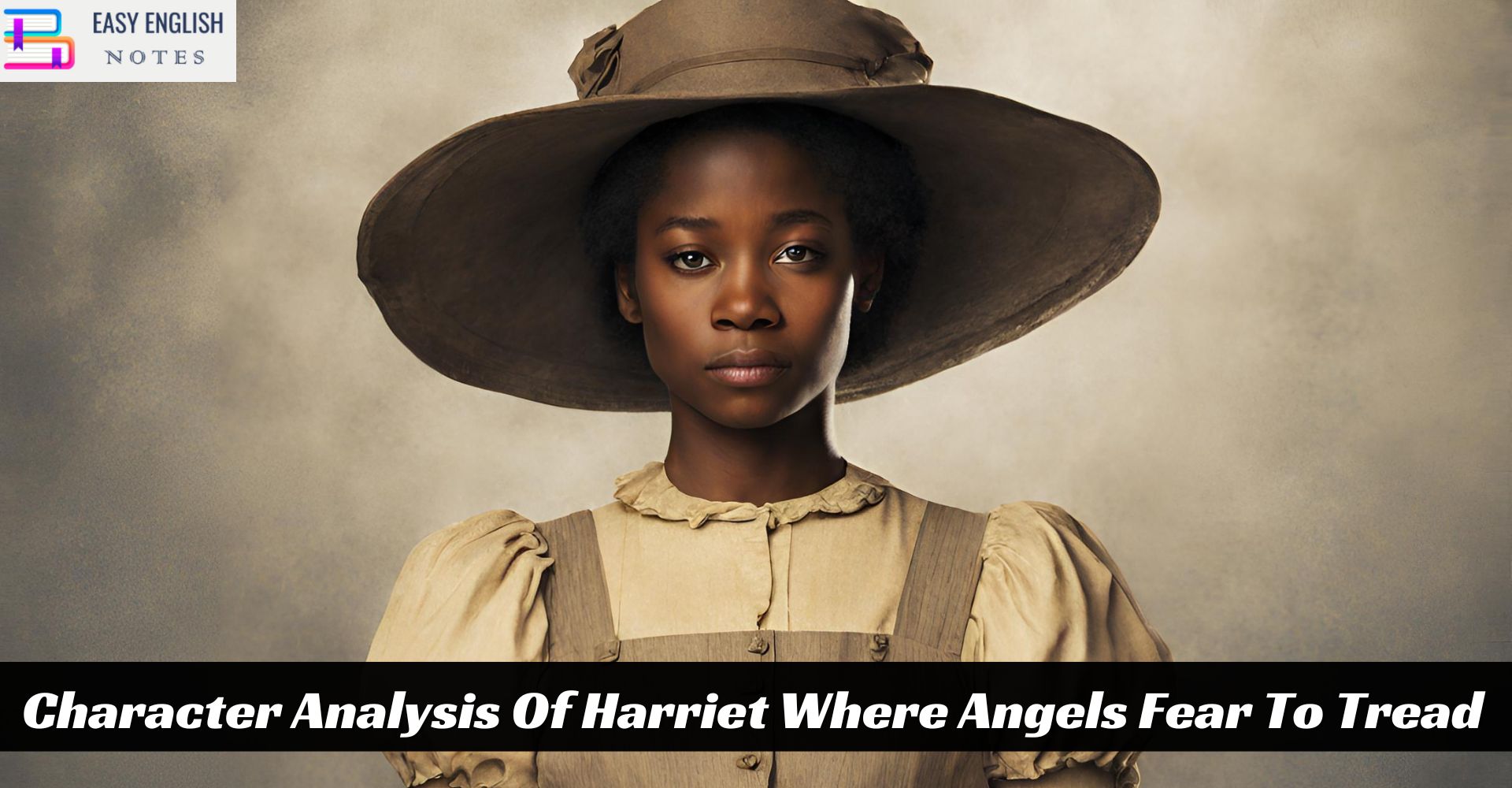Harriet Herriton is a significant character in E.M. Forster’s “Where Angels Fear to Tread.” As a member of the Herriton family, her character plays a crucial role in the unfolding of the novel’s plot and its exploration of themes such as cultural clash, family dynamics, and personal prejudices. Here is a sketch of Harriet’s character:
- Conservative and Traditional: Harriet is portrayed as a conservative and traditional Englishwoman. She holds strong views about social propriety and is often critical of behaviors and lifestyles that deviate from her understanding of what is acceptable and respectable.
- Snobbish and Judgmental: She often comes across as snobbish and judgmental, particularly towards those she deems socially or culturally inferior. This attitude is most evident in her disdain for the Italian culture and her disapproval of Lilia’s marriage to Gino, which she views as a disgrace to the family.
- Strong-Willed and Determined: Harriet is characterized by her strong will and determination. Once she sets her mind on something, she is relentless in her pursuit of it. This trait is especially prominent in her resolve to ‘rescue’ Lilia’s child from Italy, reflecting both her stubbornness and her deep conviction in her own beliefs.
- Lack of Empathy and Cultural Sensitivity: Throughout the novel, Harriet displays a notable lack of empathy and cultural sensitivity. Her inability to appreciate or respect the Italian way of life underscores the cultural chasm between the English and Italian characters in the story.
- Protective of Family Reputation: Harriet is deeply concerned with maintaining the respectability and reputation of the Herriton family. Much of her motivation throughout the novel is driven by her desire to uphold the family’s standing in society, even if it means acting in morally questionable ways.
- Complex Family Dynamics: Her interactions with other family members, particularly Philip and Mrs. Herriton, reveal complex family dynamics. She often finds herself in conflict with Philip, whose views and actions are more liberal and empathetic than hers.
- Rigid and Unyielding: Harriet’s character is marked by a certain rigidity and an unwillingness to adapt or change her views. This trait leads to some of the more tragic and ironic events in the novel, as her actions, driven by her rigid beliefs, have unintended and often harmful consequences.
In summary, Harriet Herriton is a character that embodies the conservative, judgmental, and culturally insensitive attitudes of the English upper-middle class of the early 20th century. Her strong will, traditional values, and lack of cultural empathy play a significant role in the novel’s exploration of cultural conflicts, family dynamics, and the tragic consequences of arrogance and insensitivity.
Also Read :
- Compare Hamlet with Macbeth, Othello and other Tragedies
- “The Pardoner’s Tale” is the finest tale of Chaucer
- Prologue to Canterbury Tales – (Short Ques & Ans)
- Confessional Poetry – Definition & meaning
- Line By Line Explanation Of The Poem The Eve of St. Agnes
Forster always distinguished between “flat and round” characters. Forster says that “Flat characters” do not undergo any change or development or movement in the whole novel. They are stuff for the comedy. On the contrary, round characters are those who are responsible for the tragic scene or for the development of the novel. They are capable of doing any change in the circumstances of the story. If we look after this category we find that Gino and Lilia are round characters whereas Mrs. Herriton and Harriet are flat character.
The character of Harriet is less important than any other characters like Caroline or Philip or Gino. Miss Herriton also is a secondary character in the novel. She represents the more militant and stupid side of Mrs. Herriton’s characters. Herriton takes the news of the death of Gino child as calmly, although it was a tragic news. But they are worried about the child and implication of Lilia’s financial inheritance. Harriet has gone on a holiday to Tripol a mountain resort in the Alps. Mrs. Herritons decides to send Philip to Italy to bargain with Gino about handing over the child to the Herriton for its upbringing. Philip first goes to Tripol and takes Herriot along from there. They reach Monteriano and Philip tries to persuade Gino to give the child to him for upbringing but he bluntly refuses to do so. Even Caroline who has gone there with the same motive does not succeed, Harriet promptly steals the child of Gino when it is convinced that neither Caroline nor Philip is ready to accept the child. The child is killed in the accident when the carriage of caroline Collides with that of Philip and Harriet as they are driving in rain and darkness to the station. For this tragic scene only Harriet is responsible. In this way she is the main agent of this episode.











